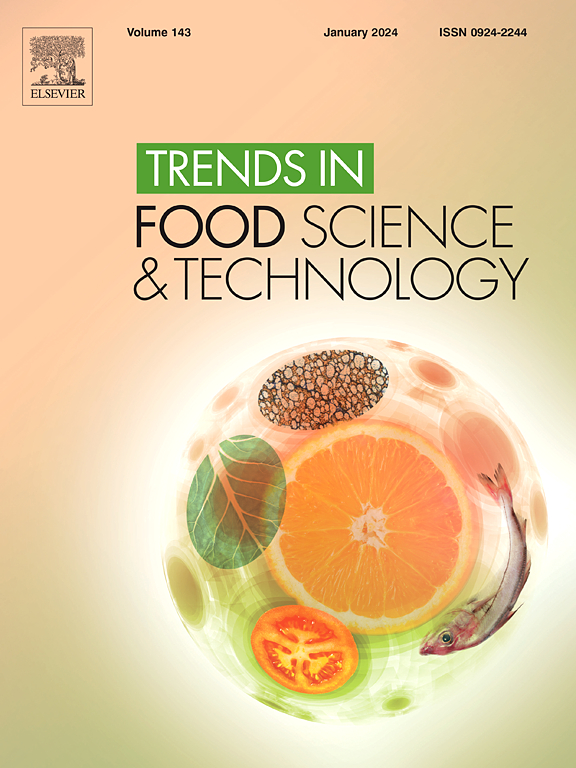Smart screening, detection, warning, and control of 3R food hazards and their potential social science impacts
IF 15.1
1区 农林科学
Q1 FOOD SCIENCE & TECHNOLOGY
引用次数: 0
Abstract
Background
The 3R foods—"ready-to-cook,” “ready-to-eat,” and “ready-to-heat"—are gaining popularity. Supporters believe that this type of food is convenient and safe. However, opponents refute that safety risks in 3R foods are still of concern. Therefore, there is significant controversy surrounding this issue. Furthermore, the present 3R food safety system is not sufficiently smart to handle the problems in data processing, storage, and collecting. Food safety may be improved by incorporating advanced intelligent technology into the 3R food-related system.
Scope and approach
The smart screening, detection, warning, and control components of the 3R food safety system were systematically divided in this review. Additionally, the intelligent algorithms and internal connections of each section were the focus of this work. Consumer behavior, governmental regulations, and economic impacts of intelligent 3R food technology were also emphasized.
Key findings and conclusions
The typical risks associated with 3R food included thermal reaction-related hazards, thermotolerant Bacillus, and migrating packaging materials. Despite their tight connections, smart screening, detection, warning, and control each possessed distinct emphasis. In this sense, relatively abundant and limited 3R food data were handled with feature selection and generative adversarial networks, respectively. Notably, the development of smart technology in 3R food safety might face more significant obstacles from potential social science aspects than from technological ones.
求助全文
约1分钟内获得全文
求助全文
来源期刊

Trends in Food Science & Technology
工程技术-食品科技
CiteScore
32.50
自引率
2.60%
发文量
322
审稿时长
37 days
期刊介绍:
Trends in Food Science & Technology is a prestigious international journal that specializes in peer-reviewed articles covering the latest advancements in technology, food science, and human nutrition. It serves as a bridge between specialized primary journals and general trade magazines, providing readable and scientifically rigorous reviews and commentaries on current research developments and their potential applications in the food industry.
Unlike traditional journals, Trends in Food Science & Technology does not publish original research papers. Instead, it focuses on critical and comprehensive reviews to offer valuable insights for professionals in the field. By bringing together cutting-edge research and industry applications, this journal plays a vital role in disseminating knowledge and facilitating advancements in the food science and technology sector.
 求助内容:
求助内容: 应助结果提醒方式:
应助结果提醒方式:


